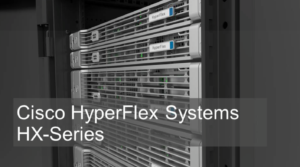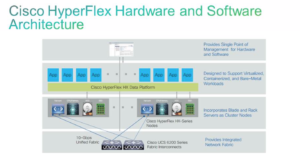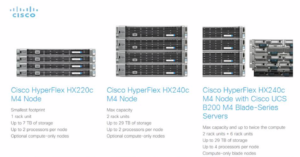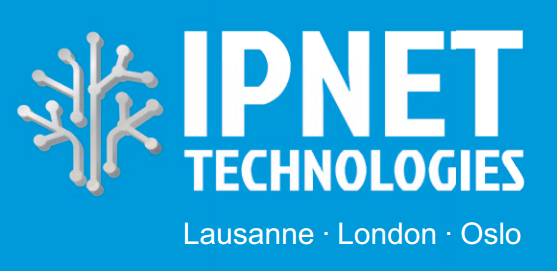Cisco Hyperflex System
Cisco HyperFlex Systems
Cisco HyperFlex Systems are designed with an end-to-end software-defined infrastructure that elimates the compromises found in first-generations products. Cisco HyperFlex Systems combine software-defined computing in the form of Cisco Unified Computing System (UCS) servers, software-defined storage with powerful new Cisco HyperFlex HX Data Platform Software, and software-defined networking (SDN) with the Cisco unified fabric that integrates smoothly with Cisco Application Centric Infrastructure (Cisco ACI). The result is a preintegrated cluster that is up and running in an hour or less and that scales resources independently to closely match your application resource needs.
HyperFlex is built on the Cisco UCS platform. It is part of a data center architecture that supports traditional, converged, and hyperconverged systems with common policies and infrastructure management.
- Focus on Simplicity – Reduce complexity, Automate, and hide complexity
- Software Define Everything
- Pay as you grow, not buy a ton of infrastructure and grow into it
HyperFlex Systems consists of Cisco UCS Servers and software-defined storage technology that Cisco developed through a strategic partnership with Springpath, a Sunnyvale, California based startup founded by former VMware storage engineers.
The technology, which Cisco is calling the HX Data Platform, pools storage from solid-state and conventional hard drives and turns it into an enterprise-grade object storage system.
HyperFlex is built on an API-driven architecture for the interoperability requied by DevOps-style IT. It integrates into orchestration toolsets and cloud services.
- No GUI interface – Uses Vsphere to manage so no management silos
- Scaling and data optimization saw gaps in the industry, so HyperFlex was seeking to fix this
HyperFlex is built on the Cisco UCS platform. It is part of Data Center architecture that supports traditional, converged, and hyperconverged systems with common policies and infrastructure management.

Cisco HyperFlex Systems is a new family of fully productized, Cisco branded solutions that is in the Cisco Data Center portfolio.
A hyper-converged system allows the integrated technologies to be managed as a single system through a common toolset. Hyper-converged systems can be expanded through the addition of nodes to the base unit. Common use cases include Virtualized Workload.

Cisco HyperFlex HX220c M4 node has the smallest footprint:
- 1 rack unit
- Up to 7 TB of storage
- Up to 2 processors per node
- Optional compute-only nodes
Cisco HyperFlex HX240c M4 Node has the maximum capacity:
- 2 rack units
- Up to 29 TB of storage
- Up to 2 processors per node
- Optional compute-only nodes
Cisco HyperFlex HX240c M4 Node with Cisco UCS B200 M4 Blade-Series Server has the maximum capacity and up to twice the compute:
- 2 rack units + 6 rack units
- Up to 29TB of storage
- Up to 4 processors per node
- Compute-only blade nodes

The Cisco HyperFlex HX Data Platform includes:
- Enterprise-class data management features that are required for complete lifecycle management and enhanced data protection in distributed storage environments – including replication, deduplication, compression, thin provisioning, rapid, space-efficient clones, and snapshots.
- Simplified data management that integrates storage functions into existing management tools, allowing instant provisioning, cloning, and snapshots of applications for dramatically simplified daily operations.
- Independent data optimization with inline data deduplication and compression that increases resources utilization with more headroom for data scaling.
- Dynamic data placement in node memory, enterprise-class flash memory (on solid sate disk [SSD] drives), and persistant storage tiers (on hard-disk drives [HDDs] to optimize performance and resiliency –and to readjust data placement as you scale your cluster.
- API-based data platform architecture that provides data virtualization flexibility to support existing and new cloud-native data types.

